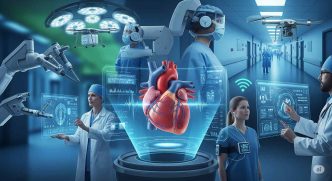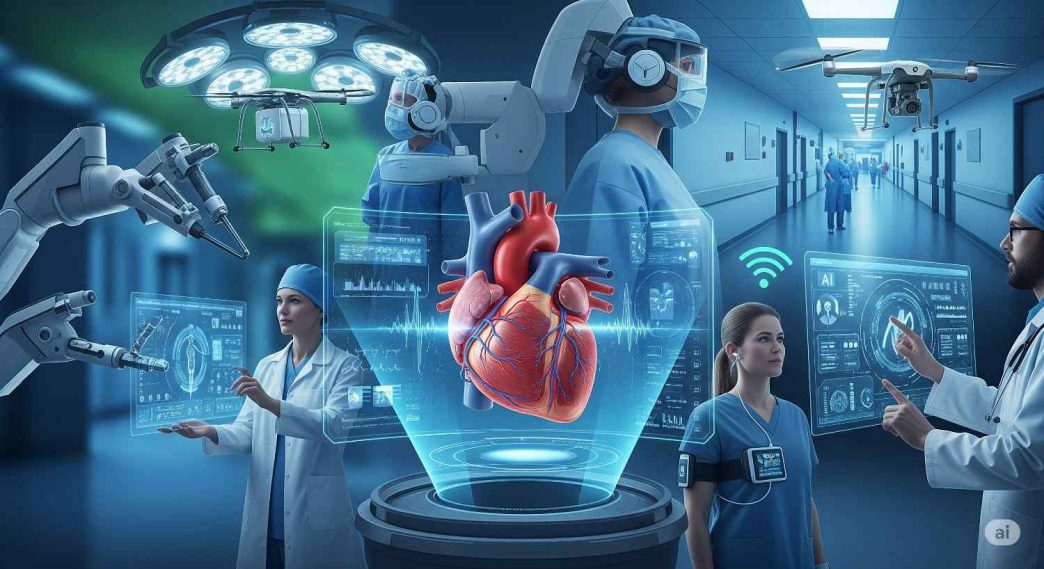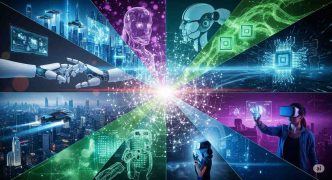Explore the latest technology innovations in healthcare in 2025. Learn about AI, telemedicine, wearables, and other breakthroughs revolutionizing patient care.
Technology Innovations in Healthcare:
The healthcare industry is undergoing a massive transformation thanks to technology innovations that are enhancing patient care, improving diagnoses, and revolutionizing treatments. From AI-driven diagnostics to telemedicine and wearable health tech, technology is reshaping how healthcare providers and patients interact. In 2025, healthcare technology promises to make treatments more personalized, efficient, and accessible. In this article, we will explore some of the most significant healthcare technology innovations set to impact the industry in the coming years.technology innovations in healthcare
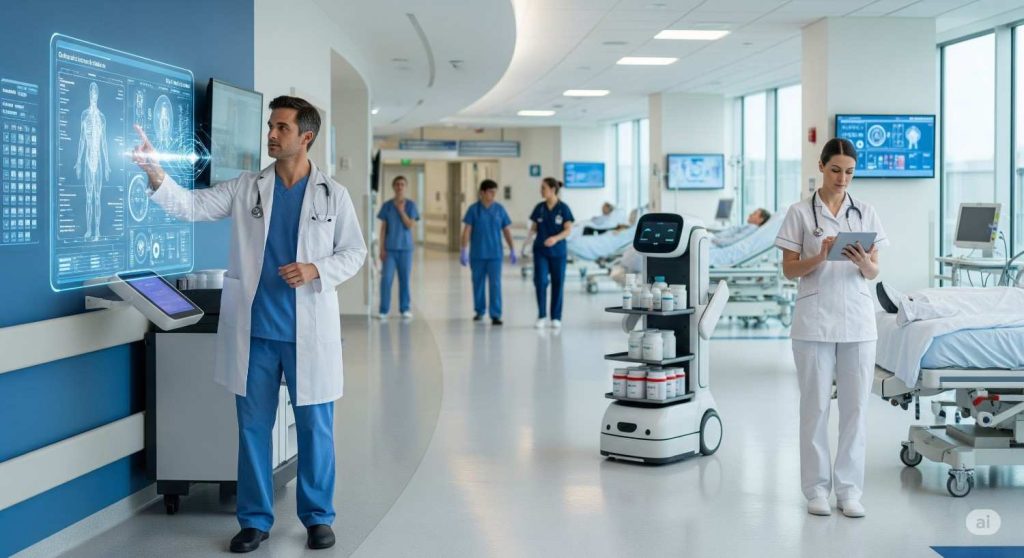
1. Artificial Intelligence (AI) in Healthcare
Artificial Intelligence (AI) is one of the most promising innovations in healthcare, offering solutions that improve diagnosis accuracy, treatment planning, and overall patient care.Technology Innovations in Healthcare: Transforming Patient Care in 2025
- AI in Diagnostics: AI-driven tools can analyze medical images, detect anomalies, and provide diagnostic recommendations faster and more accurately than human doctors. For example, AI algorithms can identify cancerous growths in radiology scans or detect early signs of diabetic retinopathy in eye examinations.
- Personalized Treatment Plans: AI can also help create more personalized treatment plans by analyzing patient data, medical history, and genetic information. This can lead to more effective treatments tailored to individual patients.
- Predictive Analytics: AI’s ability to analyze vast amounts of data allows for predictive analytics, which can forecast potential health risks and complications before they occur, helping healthcare providers take proactive measures.
Why It Matters: AI in healthcare improves the speed, accuracy, and efficiency of medical processes, potentially saving lives and reducing healthcare costs.
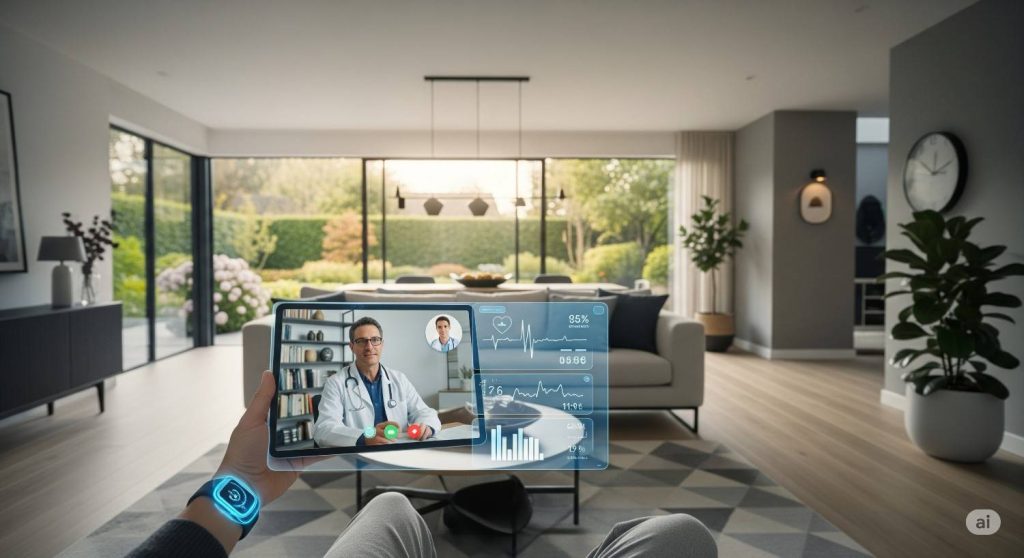
2. Telemedicine and Remote Patient Monitoring
The rise of telemedicine has transformed the healthcare landscape, particularly for patients in remote areas or those with mobility issues. Telemedicine allows patients to consult healthcare professionals through video calls, phone consultations, or online chats, making healthcare more accessible.
- Remote Patient Monitoring (RPM): Telemedicine is complemented by remote patient monitoring, where wearable devices track patients’ vital signs in real-time. These devices can monitor heart rate, blood pressure, glucose levels, and more. The data is sent to healthcare providers who can intervene if needed, ensuring constant care without the need for in-person visits.
- Benefits:
- Reduced need for hospital visits and in-person consultations.
- Greater accessibility for patients in rural areas.
- Cost-effective for both healthcare providers and patients.
Why It Matters: Telemedicine and remote monitoring are making healthcare more convenient and affordable. These innovations are especially crucial in light of global health challenges, such as the COVID-19 pandemic.
3. Wearable Health Devices
Wearable health devices are revolutionizing how individuals monitor their health daily. Devices like smartwatches, fitness trackers, and health-monitoring gadgets are becoming commonplace, allowing users to track metrics such as physical activity, heart rate, sleep patterns, and more.
- Health Tracking: Devices like Apple Watch and Fitbit not only track physical activity but also measure critical health metrics like blood oxygen levels, heart rhythms, and ECGs. They can alert users to irregularities such as irregular heartbeats, prompting early interventions.
- Chronic Disease Management: Wearables also help individuals with chronic conditions, such as diabetes or hypertension, by monitoring glucose levels or blood pressure continuously and sending real-time updates to healthcare providers.
Why It Matters: Wearables give individuals the tools to take charge of their health, providing real-time data that can lead to earlier interventions and better overall health outcomes.
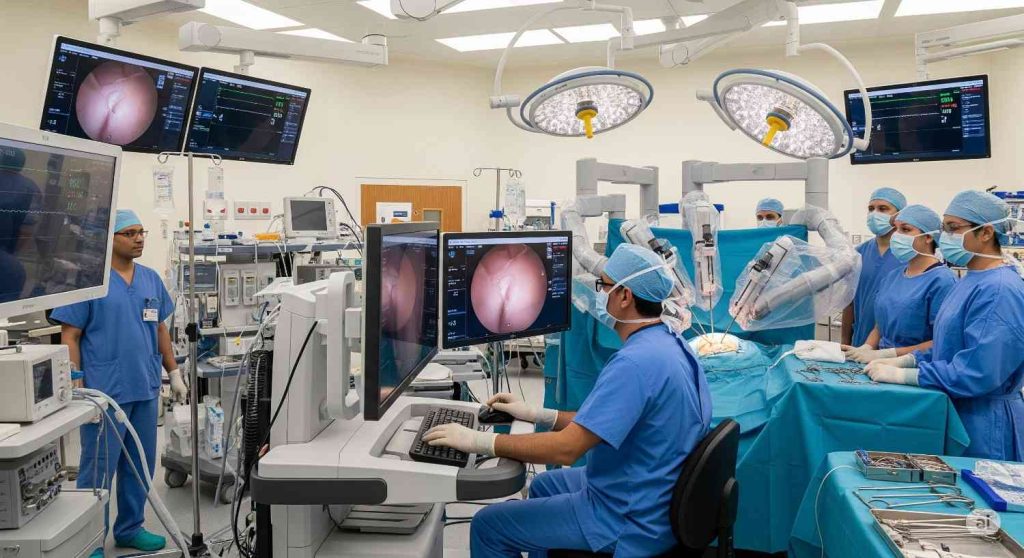
4. Robotics in Surgery
Robotics is taking minimally invasive surgery to new heights, allowing for more precision, smaller incisions, and faster recovery times. Robotic systems like the da Vinci Surgical System and robotic-assisted surgery are being increasingly used for procedures ranging from prostate surgery to heart surgeries.
- Benefits of Robotic Surgery:
- Precision: Robotic arms can perform delicate tasks with more precision than human hands.
- Faster Recovery: Smaller incisions lead to less trauma to the body, reducing pain and allowing patients to recover faster.
- Reduced Risk of Infection: Minimally invasive procedures result in a lower chance of infection, enhancing patient safety.
Why It Matters: Robotic surgery enhances precision and efficiency, providing patients with safer procedures and quicker recoveries.
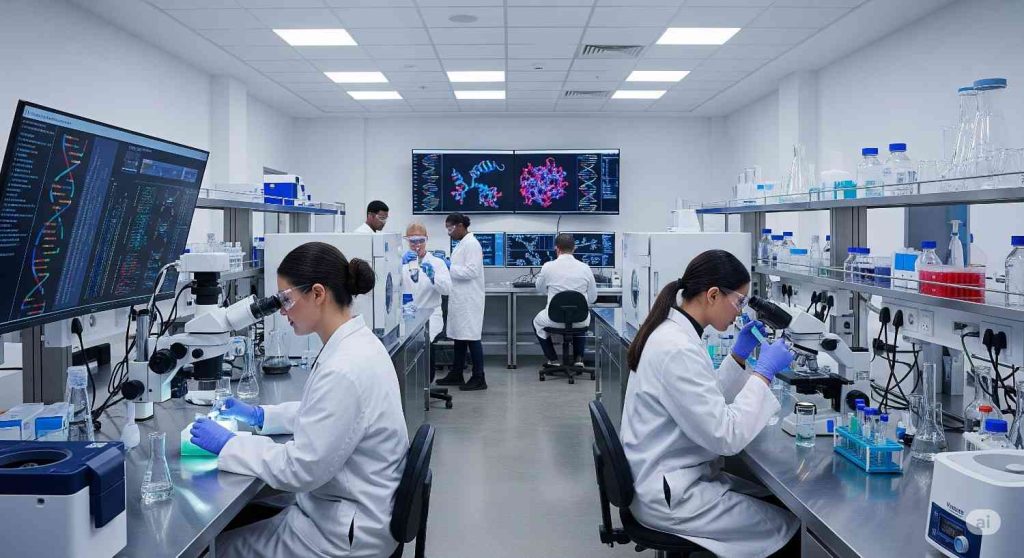
5. Biotechnology and Genetic Engineering
Biotechnology is unlocking new possibilities in personalized medicine, genetic engineering, and treatment for previously untreatable conditions. Technologies such as CRISPR gene editing and bioprinting are leading to breakthroughs in how we approach genetic diseases and medical treatments.Technology innovations in healthcare
- Gene Editing: CRISPR-Cas9 technology enables scientists to modify genes at specific locations, potentially curing genetic disorders like cystic fibrosis, sickle cell anemia, and muscular dystrophy.
- Bioprinting: 3D printing technology is being used to print human tissues and organs, opening up the possibility of organ transplants without the need for donors.
Why It Matters: Biotechnology innovations offer the potential for curing diseases, extending lifespans, and offering new treatments that were once considered impossible.
FAQs: Technology innovations in healthcare
1. How is AI used in healthcare?
AI helps with diagnosis, personalized treatment, and predictive analytics, making healthcare faster and more accurate.
2. What is telemedicine?
Telemedicine allows patients to consult doctors remotely, improving access and convenience, especially for those in rural areas.
3. How do wearable devices work?
Wearables monitor health metrics like heart rate and sleep patterns, offering real-time data for better health management.
4. Benefits of robotic surgery?
Robotic surgery offers precision, smaller incisions, and faster recovery, leading to safer procedures.
5. How does biotechnology impact healthcare?
Biotech innovations like gene editing and bioprinting offer potential cures and personalized treatments, transforming medical care.
Conclusion
Technology innovations in healthcare are advancing rapidly, with AI, telemedicine, wearables, robotics, and biotechnology leading the charge. These technologies promise to make healthcare more accessible, efficient, and personalized, improving patient outcomes and reducing costs. As we move further into 2025, these innovations will continue to shape the future of medicine, transforming how we diagnose, treat, and prevent diseases.
By embracing these Technology Innovations in Healthcare, we can look forward to a healthcare system that is not only more responsive but also more patient-centered and effective.
Know more related:
Future of Work 2025: How AI Is Changing Careers
